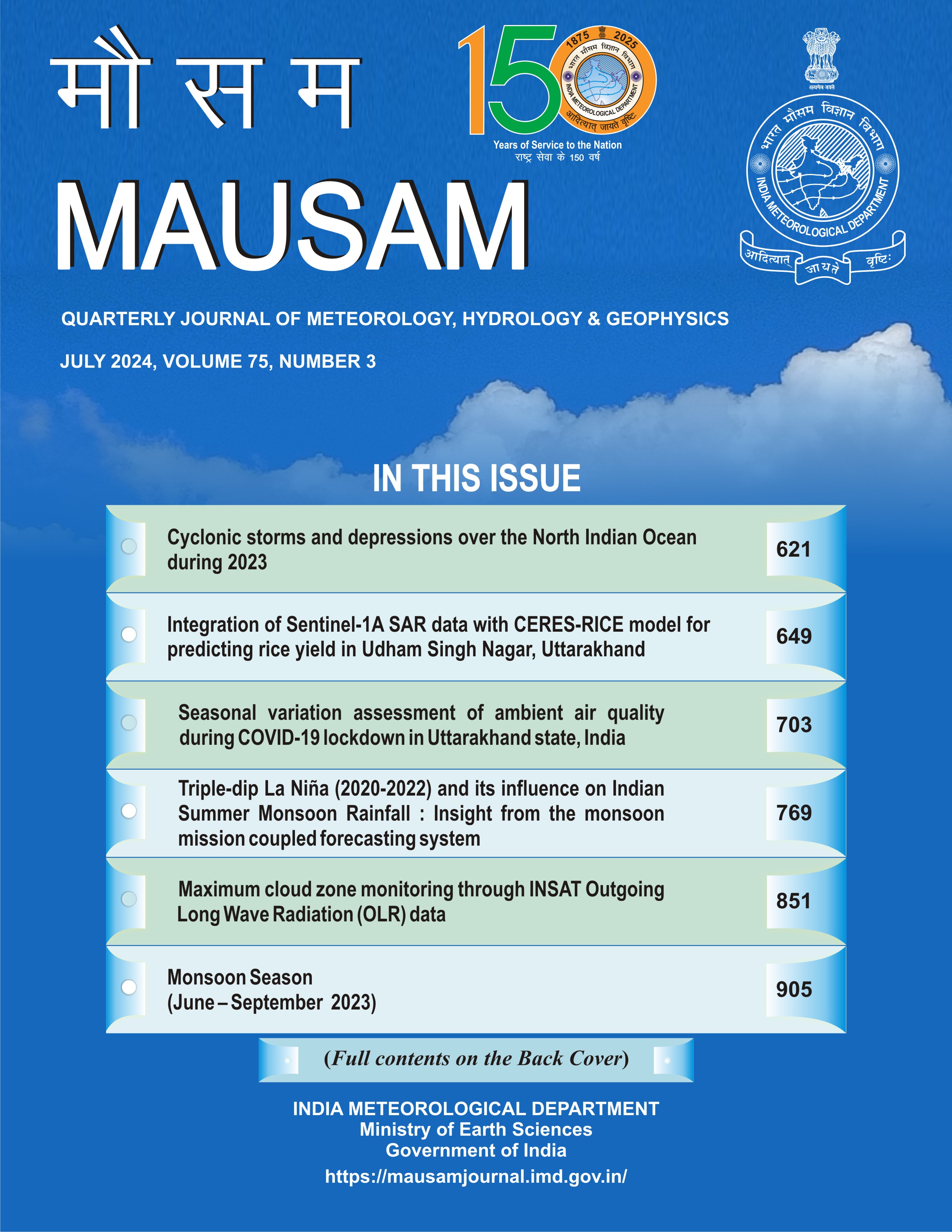Observational Study on Air-Water Interactions over Poyang Lake during a Cold Season
DOI:
https://doi.org/10.54302/mausam.v75i3.5961Abstract
ABSTRACT
In a lake, the heat and energy budgets and evaporation are the most fundamental components of the regional weather and climate and are controlled by the interactions between the lake and the atmosphere. Poyang Lake is the largest freshwater lake in China. The surface area of this shallow lake, located in the central and lower catchment of the Yangtze River, southeastern China, varies across the year based on the precipitation. A steel platform was built in the northeast open-water area of the lake to measure surface energy fluxes and other related atmospheric/hydrologic variables during a cold season from 1 December 2020 to 28 February 2021. The results show the average water surface temperature was 1.25°C higher than the 2 m height air temperature, though temperature inversions occasionally occurred for short periods. The average wind speed and friction velocity were small, leading to weak turbulent mechanical mixing. Consequently, consistently positive and moderate latent and sensible heat fluxes (17.4 and 5.4 W/m2, respectively) values were produced due to the effects of turbulent mixing from thermal and mechanical factors. The monthly average albedo was large at mid-day (0.086). The low Bowen ratio (about 0.37) also indicates that more latent heat is released than sensible heat. When dry and cold air passed over the lake, the pressure of vapor and air temperature decrease significantly, the turbulent mechanical mixing is enhanced and the energy budget changed. As a consequence, the Ts-Ta, es-ea values, and sensible and latent heat fluxes all increase.
Downloads
Published
How to Cite
Issue
Section
License
Copyright (c) 2024 MAUSAM

This work is licensed under a Creative Commons Attribution-NonCommercial 4.0 International License.
All articles published by MAUSAM are licensed under the Creative Commons Attribution 4.0 International License. This permits anyone.
Anyone is free:
- To Share - to copy, distribute and transmit the work
- To Remix - to adapt the work.
Under the following conditions:
- Share - copy and redistribute the material in any medium or format
- Adapt - remix, transform, and build upon the material for any purpose, even
commercially.



